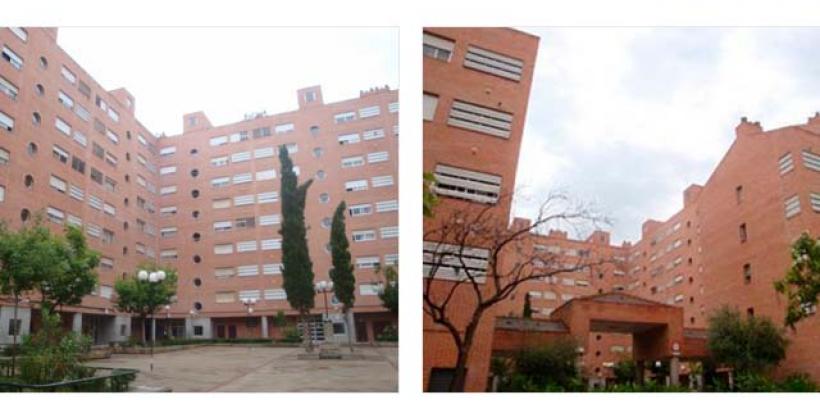
Location
Description
There are four pilot buildings in the Zaragoza (Spain) demonstration project.
Pilot 1 – CIRCE headquarters
It is a zero emission building constructed in 2010 dedicated to R+D+I activities, including laboratories and offices. The total area is 1,743 m2.
CIRCE’s building behaves poorly during summer time. When designed, it was expected to not require any air conditioning, basing its operation during summer on underfloor cooling and natural ventilation systems. Nevertheless, the thermal inertia of the building was underestimated and both cooling systems presented problems. From one side, the underfloor system caused ambient water condensations, supposing a safety problem. On the other, the natural ventilation system required from the building users to follow some protocols for windows, doors and roof skylight opening and closing, that employees did not follow adequately. In this situation, the installation of fan coil units was needed, as the temperature raised even up to 39ºC in the offices.
The installation of some ICT controls, relying on the existing monitoring system, together with a behaviour change of the employees is expected to generate energy savings around 15%.
Pilot 2 – San Pablo public offices
This building behaves poorly in winter and in summer due to the heating and cooling system. The system installed are individual and obsolete fan coils (heat and cool pumps) supported by a common cooling system and a boiler. The working area has wide spaces with almost any walls plus some private offices producing as result that the heat and the cold air is not well distributed so workers end up by installing small electrical stoves in winter and turning really down (15-16ºC) the air conditioner in summer to try to obtain comfort temperatures.
The illumination is another aspect that needs to be improved: obsolete luminaires and lamps plus the inexistence of spectral distribution of the illumination, producing big consume and having most parts of the building either all illuminated or switched off.
The installation of the TIC systems plus the changes of behaviour will permit maintaining comfort temperatures in winter and in summer (20-25º) and will allow putting of the building in the afternoon automatically.
Pilot 3 – Emmeline de Pankhurst
This is a 1,400 m2 building, constructed in 1992. There are individual natural gas boilers for heating. The building is in good state, with average insulations.
The electrical bills cover costs for illumination, cooking, appliances and the gas bill includes costs for heating and hot water. In this sense, detailed information can help the tenants to analyze their own habits and change behaviors.
Improvements in the glass insulation concerning windows will be appropriate and assessed during the project.
The installation of the TIC systems plus the changes of behaviour will be of great help to be able to distinguish in the main expenses (electricity and gas) where the big consumes are.
Pilot 4 – I.E.S. Azucarera
Azucarera’s building presents two main problems. The first one is due to the façade characteristics. The façade is made of aluminium and it suffers of overheating during summer time. It also is responsible of heterogeneity of the temperature distribution along the building, which results in a decrease of the comfort levels.
Improvements in the glass insulation concerning windows will be appropriate and assessed during the higher consumption on heating and air conditioning. The second problem that will be solved in the I.E.S. Azucarera is the high level of reflection on the screens caused by natural light coming through the windows. Due to this problem, lights must be on during the whole day increasing the consumption level of the building.project.
TRIBE’s project will obtain an improved regulation of the thermal energy while taking into account the characteristic load curve of a public school, which is determined by fixed schedules.
